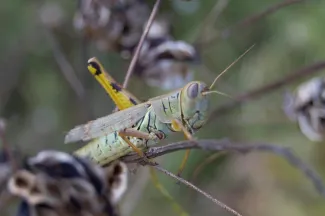Food, water, shelter, space, and arrangement. These five key habitat components are important for both humans and wildlife, but may be obtained in nontraditional ways. Quail, for example, need water, but often rely on their diet to meet their water intake requirements.
During spring green-up, these game birds target newly sprouted plants, not only for their nutrients, but also for their water content. In later spring and summer, fruit-producing plants like blackberries, pokeweed and even poison ivy are great water sources.
As rains become more scarce in summer and vegetation less lush, quail turn to insects like crickets and grasshoppers to meet their water needs. These insects carry the birds into the fall. When winter arrives, quail are primarily relying on seeds from native forbs and, depending on the species, some seeds contain quite a bit of water.

So what about surface water? Research by Oklahoma State University at Packsaddle and Beaver River Wildlife Management Areas indicates that water sources may attract quail, but has no effect on their survival or nest success.
Game cameras were installed on water sources like guzzlers or water tanks to capture images of what animals were utilizing the water during the study. Game birds were rarely seen visiting the water sources. Instead, other wildlife like coyotes were observed. It was found that “surface water can concentrate birds, but no evidence was found that water led to an increase in the number of quail.
To improve potential water sources for quail and other upland birds on your property, consider the following:
- Limit the use of herbicides and pesticides; if there are no seeds or insects game birds will be resource limited.
- Allow native grasses and forbs to grow; these native plants promote a healthy system and are beneficial for livestock and wildlife.
- Reduce the numbers of exotic or invasive plants; eastern redcedar can use up to 30 gallons of water per day and prevent native plants from growing, along with several other negative effects.
To survive, animals need adequate habitat, but they sometimes utilize different methods than we would think. Though quail don’t require water in the traditional sense, it doesn’t make water any less important!